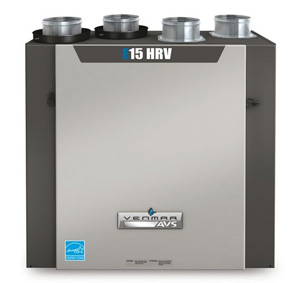Heat Recovery Ventilator (HRV)
Heat recovery ventilators are required by most building codes in today’s tightly sealed homes. New homes are being built more energy efficient and are more airtight. To prevent air quality problems such as excess humidity, pollutants, and odour in your home you may consider a heat recovery ventilator (HRV). By removing excess humidity in the home, you prevent mold and mildew from forming and causing serious damage to your home or health issues to your family.
How a Heat Recovery Ventilator Works

Energy Recovery Ventilator (ERV)
Like the heat recovery ventilator, the energy recovery ventilator (ERV) recovers heat but also the energy trapped in humidity.
If it is more humid outside than inside the home, the ERV will limit how much humidity enters your home. If levels of humidity are low, it will limit how much humidity is transferred from inside the home to the outdoors. This improves the overall recovery efficiency.
Let us help you decide which system is best for your home.
Northumberland Heating and Air Conditioning uses Venmar systems but we can use other suppliers or brands on request.
Some of our information came from the Venmar website.